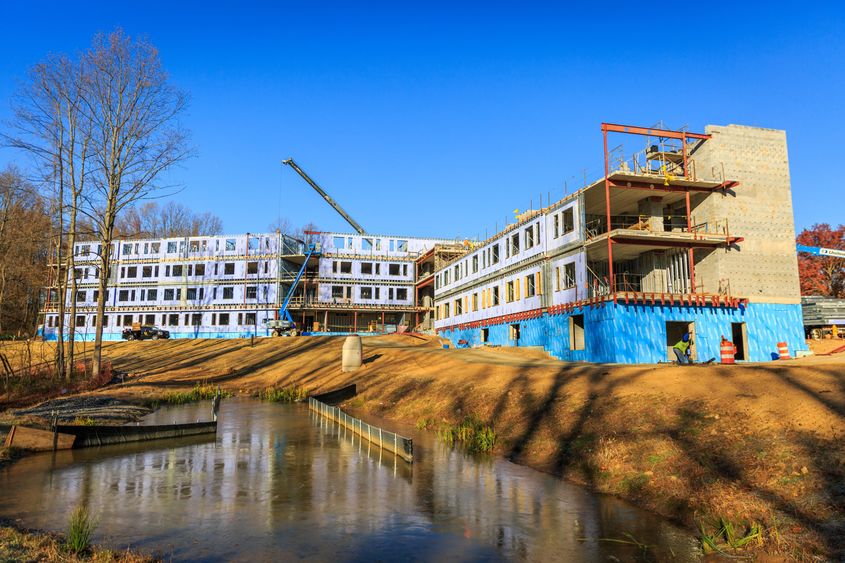
A new residence hall at Penn State Brandywine is set to open in fall 2017, providing space for 250 students. The campus student union will also host a new dining facility. The new Brandywine facilities, along with ones opening at University Park and Abington campuses, represent a major milestone in the Housing and Food Services construction and renovation plan, said Gail Hurley, associate vice president for Auxiliary and Business Services.
UNIVERSITY PARK, Pa. -- As is typically done at the February meeting of the Penn State Board of Trustees, a presentation on room and board rates for the upcoming academic year was presented today (Feb. 23), to the Committee on Finance, Business and Capital Planning.
The full board will vote on the proposal on Friday (Feb. 24).
If approved, the average room and board rate — which includes a standard double room and the most common meal plan — will be $5,395 per semester, a 3.15 percent increase or $165 over 2016-17. All current rates specific to various campus living units and meal plan options can be found online at http://www.hfs.psu.edu/rates. If the board approves the proposed new rates in their meeting on Friday, the site will have the changes posted soon thereafter. The proposed rate increases cover all anticipated cost increases including changes in payroll, food, supplies, utilities and services, such as refuse collection.
Housing and Food Services is a self-supporting enterprise. Money paid by students and guests for food and lodging are the only funds used for all operating expenses, building loans and interest payments, as well as costs for major maintenance and facility renewal. No state or tuition funds are used for the maintenance of facilities, or for the operations of the housing and dining program.
In response to student feedback, the campus meal plan is being revised effective fall 2017 to simplify the overall number of options and provide a smaller, less costly plan 1.
A component of the housing increase is due to the capital assessment funds being used to renovate existing facilities and expand the residential program to the Abington and Brandywine campuses. The board approved a revised, multi-year Capital Assessment in May 2016 to expedite residence hall renovations and accelerate the Housing and Food Services Capital Plan.
Four new facilities will open in fall 2017 and represent a major milestone in the Housing and Food Services construction and renovation plan, said Gail Hurley, associate vice president for Auxiliary and Business Services. At University Park, Earle Hall in East Halls will house 336 students, and Robinson Hall in North Halls will house 311 students. These new facilities will permit older residence halls to be taken off-line for renovation. In addition, on-campus housing will be provided for the first time at the Abington and Brandywine campuses. There will be an apartment building with a capacity of 400 beds at Abington and a residence hall for 250 students at Brandywine. A new dining facility in the student union will also be opened at Brandywine.
“The room and board rates proposed for 2017-18 will meet the operating needs of our expanding multi-campus residential program, provide for the necessary maintenance of our facilities, and continue the major renewal of facilities according to our overall capital plan,” said Hurley.
Overall expenses for Housing, Food Services and Residence Life are projected to increase by about $16.7 million. This increase accounts for the larger number of students who will be living and dining with Housing and Food Services due to the expansion of the facilities, basic operating expense increases, and funds needed to make continued progress on the capital plan. Housing and Food Services makes every effort to keep operational increases as low as possible so that, when combined with the capital assessment, rates remain affordable to students and their families, according to Hurley. In comparing rates with others in the Big Ten, Penn State’s rates remain competitive.



